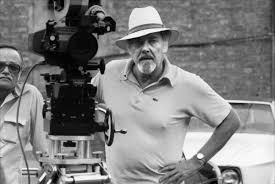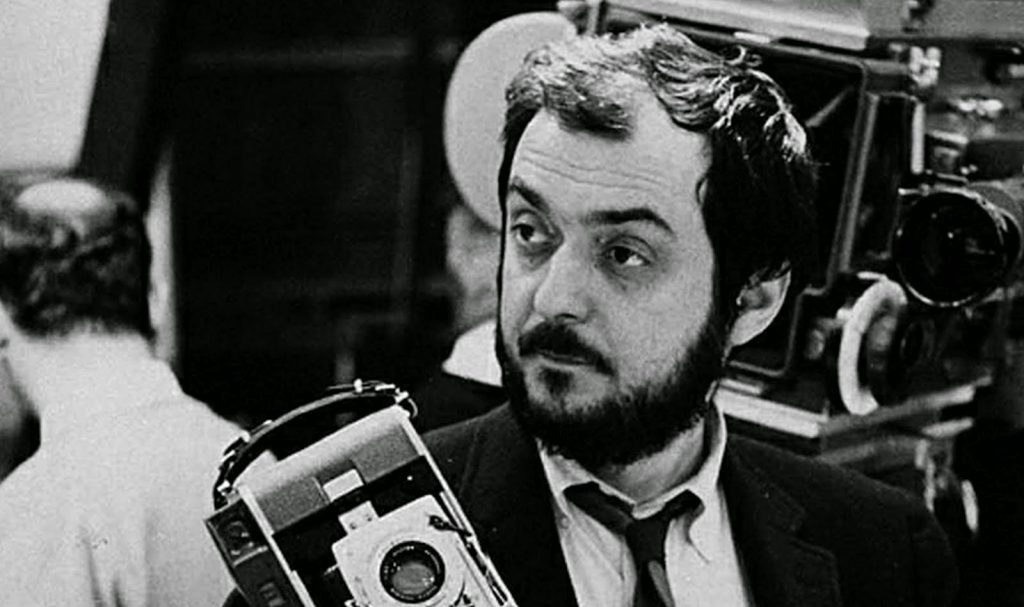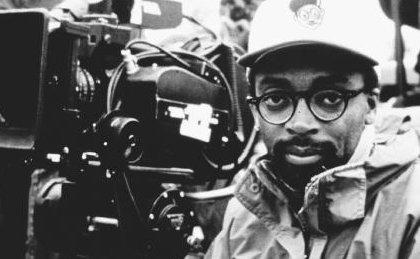Creative Rights Checklist directors. FROM DIRECTORS GUILD WEBSITE
Before Prep: Were all the company’s script, casting, approvals and budget commitments revealed to you before you took the assignment? Did you get to choose your first AD?
During Prep: Were you provided with an office? Did you participate in all casting? Was there a reasonable purpose for each of the people present at the casting session to be there? Were you told what material would be shot by a second unit? Were you consulted about the selection of a second unit director?
During Production: Did you see dailies at a reasonable time? Did you approve the use of video assist? Were you informed about any electronic transmission of sound or images from the set? Did all notes to cast and crew come directly from you?
Following Production: Were you allowed adequate time for preparing your cut? Did you see the editor’s assembly before anyone else? Did you get your cut without interference or “cutting behind”? Did you screen your cut for the producer and person with final cutting authority? Were you notified of the date, time and place of every postproduction operation? Were you offered the opportunity to direct any additional scenes or retakes? Were you offered the opportunity to direct looping or narration?
At All Times: Were you consulted about every creative decision? The director’s creative rights are codified in Article 7 of the DGA Basic Agreement. If you have any questions, please consult the Guild office or a DGA field representative.
These provisions apply to all theatrical motion pictures and to all television programs shot on film.
A. GENERAL RULES

1. The Director’s Function: The Director contributes to all creative elements relating to the making of a motion picture and participates in integrating them into a dramatic and aesthetic whole. (7-101)
2. One Director to a Picture: With few exceptions, only one Director may be assigned to a motion picture at any given time. (7-208) Only the director assigned to a motion picture may direct it. (7-101)
3. Creative Decisions: From the time you are hired or assigned to the picture until the end of postproduction, you must be informed as soon as possible of any proposal, and, if reasonably available, have the right to participate in all decisions concerning the selection of cast and other creative personnel, approval rights to third parties and any other creative matter involving the production (for example, the script, locations, set designs and constructions, shooting schedule and postproduction scheduling). In no case should any creative decision be made about preparation, production and postproduction unless the Producer consults with you. The Producer should, in good faith, consider your advice and suggestions. (7-202, 7-1501)
4. Deal Memorandum: The individual with final cutting authority over a motion picture must be designated in your Deal Memorandum. If that person leaves the company, his or her successor must be of equivalent rank and must be designated within a reasonable time. If the company fails to designate a successor, you have the right to select one from three persons submitted by the company. (7-206). The intended post production locale must also be mentioned in your Deal Memorandum. (7-506)
5. Production Executives: You may contact the executive in charge of production if you have a dispute with the individual in charge of the film. This right is limited to theatrical pictures and long-form TV films.
6. Third-Party Agreements: The Producer may not make an agreement with a third party the terms of which require it to breach your creative rights under either the Basic Agreement or your individual contract. Nor may the Producer negotiate a provision in any other collective bargaining agreement that infringes upon your creative rights under the Basic Agreement. (7-1502)
7. No Retaliation: The Producer may not discriminate or retaliate against you because you assert your creative rights under the Basic Agreement. (7-1503)
8. Replacing a Director : Except in an emergency (and then, only for five days), no person already assigned to the motion picture may replace you. (7-1401) Arbitration decisions confirm that the Producer may not create an “emergency” by terminating your employment.
B. PREPRODUCTION AND PRODUCTION

1. Disclosure Before Assignment: Before you are assigned to a film, the Producer must inform you of:
- the creative personnel already employed;
- existing film contemplated to be used;
- any rights of script or cast approval held by someone other than the Employer o Individual Producer; the motion picture’s top sheet and the story and script, if any.
2. Office, Parking and Transportation: The Producer must provide you a private office at the studio and a private facility at the studio next to the set. The office must be large enough for at least two people and have a door which shuts, adequate ventilation, a telephone, desk and desk chair and good lighting.
3. Delivery of Script: After your assignment, at your request the Producer must promptly submit to you any script or outline and any revisions. All revisions made later must be submitted to you before they are made available for general distribution.
4. Delivery of Script – Episodic Television: The Producer must give you a completed shooting script at least one day before your preparation period begins. (7-302)
5. Distribution of Script – Episodic Television: Your name must appear on the title page of each script distributed after you are assigned. (7-305)
6. Selection of Crew: The Producer must consult with you about the selection of the Unit Production Manager for any theatrical motion picture or non-episodic television program. (7-203) The Producer must also consult with you about the selection of any Second Unit Director. (7-205) If you and the Producer disagree over the selection of the Second Unit Director, the Producer should follow the procedure in Paragraph 7-205. You have the right to select the First Assistant Director on any theatrical motion picture and any non-series television motion picture which is 90 minutes or longer. (7-204)
7. Casting Sessions: The only persons who may attend casting sessions are those who have a reasonable purpose for being there and who are invited by you, the Individual Producer or the Employer. (7-1504)
8. Preparation Time – Television: You must have actual preparation time of no less than three days for a half-hour program, seven days for a one-hour program and 15 days for a two-hour program. This rule applies only to programs made for network prime time (excluding pilots) and comparable programs made for pay-TV. (7-304)
9. Second Units: Before principal photography starts, the Producer should inform you of the material intended to be shot by a second unit.
10. Budget and Shooting Schedule: The Producer may not in bad faith or capriciously reduce the budget or the shooting schedule. (7-201)
11. Stunts: The Producer may not increase the difficulty of a stunt in the shooting script delivered to you or add a stunt not in this script, unless you consent. (7-303)
12. Electronic Transmissions: The Producer may not electronically transmit from the stage any image or sound without first informing you. (7-1505)
13. Dailies: You must have the opportunity to see the dailies of each day’s photography at a reasonable time.
14. Special Photography and Processes: Before completion of principal photography, the Producer must inform you about any intent to use special photography and processes and permit you to participate in considerations about their use.
C. POSTPRODUCTION

1. Vesting of Rights: If you direct 100% of scheduled principal photography, you may not be replaced except for gross willful misconduct. (7-503) You must be given the opportunity to direct additional photography and retakes, and, if unavailable, you must have the opportunity to consult with the person who directs it. (7-1001)
2. Postproduction at a Distant Location: When postproduction takes place at a distant location, the Employer must pay for your transportation, hotel and meals while you perform postproduction services. (7-506)
3. Editor’s Assembly: The Producer must have the Editor’s assembly of television motion pictures prepared promptly. This means the Producer will use reasonable efforts to cause the Assembly to be delivered before but not later than four (4) business days for half-hour shows, and six (6) business days for one-hour shows, after the close of principal photography. (7-505)
4. Preparing the Director’s Cut: The Director’s right to prepare his or her Director’s Cut is an absolute. (7-508) You must supervise the editing of the first cut following completion of the Editor’s Assembly.
5. Viewing the Director’s Cut: Only the Individual Producer and the person with final cutting authority are entitled to see the first screening of the Director’s Cut. (7-505)
6. Right to be Present and to Consult: You must be notified of the date, time and place of each postproduction operation. (7-506)
7. Additional Photography: If you have directed 100% of the scheduled principal photography, you have the right to direct any additional scenes and retakes, subject only to your availability. If unavailable, you must be allowed to consult with the person who directs that photography. (7-1001)
8. Looping and Narration: Looping and narration must be directed by you (7-1101) as long as you are available at the time, place and cost the Employer scheduled. It is the Producer’s obligation to send you to the place where looping or narration is recorded unless it is minor in nature. (7-1102) If unavailable, you must be consulted about the selection of a substitute and be allowed to explain to the substitute your ideas on the work to be done. (7-1103)
9. Spotting and Dubbing: The Producer must give you the opportunity to take part in the spotting and dubbing of sound and music (7-1201), provided such participation does not increase costs.
10. Screenings – Television Films: Until completed, a TV film may not be shown to persons not involved in postproduction (for example, critics and network affiliates) unless there is a notice on the screen at the beginning and end of the film that it is an unfinished work in progress.
11. Motion Picture Rating: If the Employer appeals the rating given by the MPAA’s Classification and Rating Administration, you have the right to participate fully in the proceedings before the CARA’s Appeals Board. If the Producer wants to change the film to achieve the desired rating, he or she must give you the opportunity to make the changes. (7-515)
12. Previews of Theatrical Films: The Producer must give you (or the DGA if you can’t be reached) five days’ advance notice of the time and place of all previews of a theatrical film. (7-701) If the first preview is outside Los Angeles or Orange County, the Producer must provide you first-class travel and lodging.
D. SECONDARY MARKETS
1. Colorizing, Panning and Scanning, etc.: The Producer must consult with you concerning colorizing, panning and scanning, time compression and changes made to exhibit the film in 3D. (7-513)
2. Television Release of Theatrical Film: The Producer must try to license theatrical motion pictures for network broadcast so that they will be broadcast with no changes except those required by Network Broadcast Standards and Practices. (7-509b)
3. In-Flight Exhibition of Theatrical Film: The Producer may not edit or permit a licensee to edit a feature-length theatrical motion picture down to an in-flight version shorter than its generally released version. But if the film is longer than two hours it may be cut to two hours in length. (7-509f)
4. Other Versions: If the Producer wants to change a motion picture for distribution or videodiscs or videocassettes, basic cable, or in-flight, you must edit the new version or be consulted about the changes the same as you would edit or be consulted in connection with changes for television. (7-509g)
5. Photography Added to Theatrical Film: The Producer must give you the opportunity to direct additional photography added to a theatrical film beyond its theatrical version. (7-509e)
6. Foreign Theatrical Release of Television Films: If a television motion picture is to be cut in the United States for foreign theatrical release, you must have the opportunity to make a Director’s Cut. (7-1301)
7. Foreign Exhibition: If additional material is to be added for foreign exhibition of a television motion picture, you must be given the opportunity to direct that photography and to edit any English-language version. (7-510) See also (7-517) re: theatrical films.
8. Release of Director’s Cut: The Producer may not release a version of your film identified as “the Director’s Cut” unless it has been so identified by you. (7-518)
9. Director’s Videocassette: The Producer must give you a videocassette of any theatrical film manufactured for sale on videocassettes. (7-603)
Dandi Law Firm provides legal assistance in Copyright and Film. Check out our Services or contact Us!






